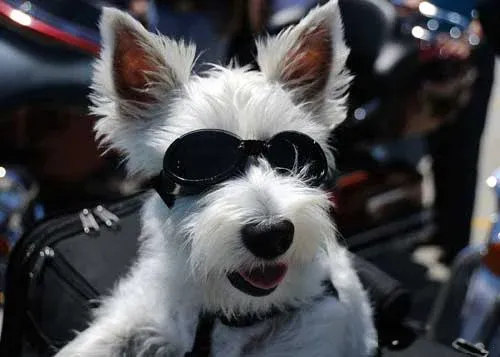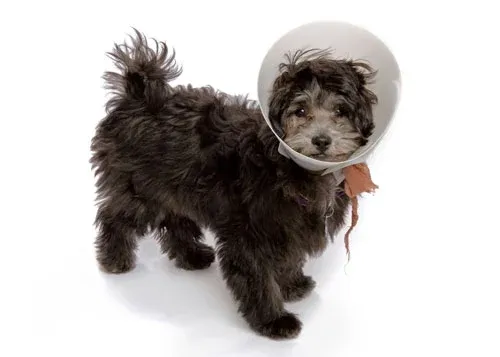6 Subtle Signs Your Dog Is Carsick (And Its Hidden Trigger)
You might not associate some of these red flags with carsickness ... But recognizing them could be the key to ending your dog's suffering, and having to clean up afterwards. Naturally, you'll want to discover the real reason so many pups get carsick.

STORY AT-A-GLANCE
- Canine carsickness is an unpleasant fact of life for many people and their four-legged companions
- Most cases of carsickness in adult dogs are the result of stress, not the motion of the vehicle
- There are several steps you can take to help your dog feel comfortable during car trips
Join the Bark & Whiskers™ Family
Sign up today for our FREE newsletter, packed with expert advice and insider tips to keep your beloved pet in tip-top shape.
View our Privacy Policy and Terms of Service.
Editor's Note: This article is a reprint. It was originally published August 28, 2015.
A good way to socialize your dog (and tune up his social skills throughout his life) is to take him in the car with you. And if he's a good traveling companion, it can be a wonderful experience for everyone.
Unfortunately, not all dogs do well in a moving vehicle. Their humans usually make this unpleasant discovery the first time little Buddy tosses his cookies either during the ride, or shortly after arrival.
Motion sickness is as real for dogs as it is for people, and it can happen during even a short 5-minute drive to the vet's office or dog park. Just as children are more likely to get car sick than adults, puppies and younger dogs are also more susceptible. This is probably because the structure inside the ears responsible for balance isn't yet fully developed. However, some dogs don't outgrow motion sickness even as adults.
If your dog became sick on her very first car ride with you, it may be strictly motion-related, and she may not outgrow it. However, for many dogs, carsickness is triggered by stress. If the only time your dog sees the inside of your vehicle is on trips to the vet's office and she vomits each time, stress may very well be the culprit.
Red Flags for Motion Sickness
Some symptoms of carsickness, like vomiting, are obvious, while others are more subtle. These are the danger signs to watch for when you travel with your canine companion:1
- Constant yawning
- Excessive drooling
- Non-stop whining
- Uneasiness
- Listlessness, inactivity
- Vomiting
How to Prevent Motion Sickness in Your Dog
Since most carsickness in adult dogs is the result of stress rather than the motion of the vehicle, easing your dog's anxiety is a good place to start. According to Dogtime.com:
"The ultimate destination of the entire trip is usually what makes your dog worried and sick. A vet visit or a kennel stay can be common concerns your dog has. Mental, emotional, and even physical trauma may be related to the car ride."2
Prevention Tips:
- Most dogs don't get carsick on an empty stomach, so make sure there are several hours (at least two) between her last meal and a ride in the car. Don't withhold water, however.
And keep in mind this may or may not work for your pet, as some dogs need a little something in their stomach to prevent motion sickness. If your pet dry heaves or vomits bile in the car several hours after eating, before your next outing, try giving her a couple tablespoons of food or a few treats to see if she does better with something in her tummy. - If your dog travels in a crate (which is the safest method of canine travel), move it from spot to spot in the car to see if the location of the crate makes a difference in how he's feeling. Some dogs do best if the crate is placed in the rear compartment of an SUV. Others do well on the back seat. Some small dogs prefer their crate to sit on the floor of the front passenger seat where they can see the driver, but not much else. (This location is typically fine in colder weather, but be careful during the summer months, as forward compartment floor space can heat up quickly.)
If you use a harness or other type of restraint, again, try moving your dog from seat to seat if possible to learn where he feels most comfortable. - Change your dog's perception of traveling in the car. Pick a place close to home (no longer than a 10 minute drive from your house) that your dog enjoys. It could be the dog park or a nearby hiking trail.
Either bring someone along to calm your dog while you're driving, or speak gently and reassuringly to him along the way. Once you reach your destination, devote your attention to your dog, playing or hiking with him, and make the outing fun for him.
On the ride back, again, do whatever works to calm your dog's nerves. Once you're home, have another vigorous play session and then let him rest. Repeat this routine at a minimum once a week so your dog learns to associate car rides with fun destinations and playtime with you. - Stop frequently on long trips, as some dogs need breaks to prevent motion sickness. A good guideline is to stop after an hour or two and let your dog out (on a leash, of course) to relieve himself. You can also offer him a drink of water or some ice chips to chew.
- Diffuse the essential oil of lavender in your car by adding a drop to your pet's collar or place a few drops on a cotton ball close to your pet; use a custom blend of stress relieving essential oils on a Sniff-It (created by my client, Lou Ann!); try Bach Flower essences such as Scleranthus, Rock Rose, or Rescue Remedy; offer ginger root a few hours before traveling.
- For severe cases of nausea in big dogs, I use a commercially available peppermint oil blend in caplet form. Also consider trying a variety of homeopathic remedies based on your pet's particular symptoms, including Cocculus, Argentum, Ipecac, and Aconitum.
- Try a T-Touch anxiety wrap. (Video demonstration).
- This one may seem a little weird, but it can't hurt to give it a try. As you're driving along, point out scenery and other animals to your dog if she's able to see out the window. Call her by name in an excited voice, and point or turn your head in the direction of the thing you want her to notice.
She may or may not catch on initially, but dogs that ride around a lot with their owners often wind up looking like little furry people as they gaze out the window and take in the sights. The idea with a stressed or potentially carsick dog is to involve her in her surroundings, generate a little pleasant buzz in the car, and provide a distraction for her. - Consider driving with the windows down as much as possible (not all the way down, just enough to let fresh air in). It's not a great idea to allow your dog to stick her head out the window, but if it seems to help her feel more comfortable, make sure she's very securely harnessed in, and invest in a pair of “doggles” (protective eyewear for dogs) to protect her eyes from sudden rushes of air, bugs, and flying debris.

If All Else Fails, Try This Trick with the 'Cone of Shame'
Strangely enough, some carsick dogs are helped by wearing an Elizabethan collar (E-collar) when they travel.
You may have one of these collars stashed somewhere from a prior veterinary procedure, or you can buy one online or at your local PetSmart, Petco, or other pet supply store.
Make sure it's a lampshade type that reduces peripheral vision (there are many types of E-collars available, but the one that's effective for motion sickness is the old-fashioned type).

Sources and References
- Dogtime.com
- 1,2 Dogtime.com
Unlock Pro Tips for Pet Wellness
Get exclusive access to expert insights and holistic health tips for your furry friend – all for FREE because your pet’s well-being is our top priority.
View our Privacy Policy and Terms of Service.











